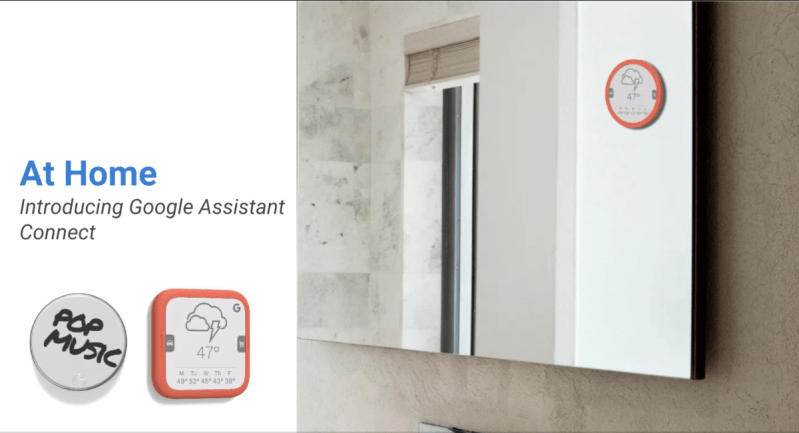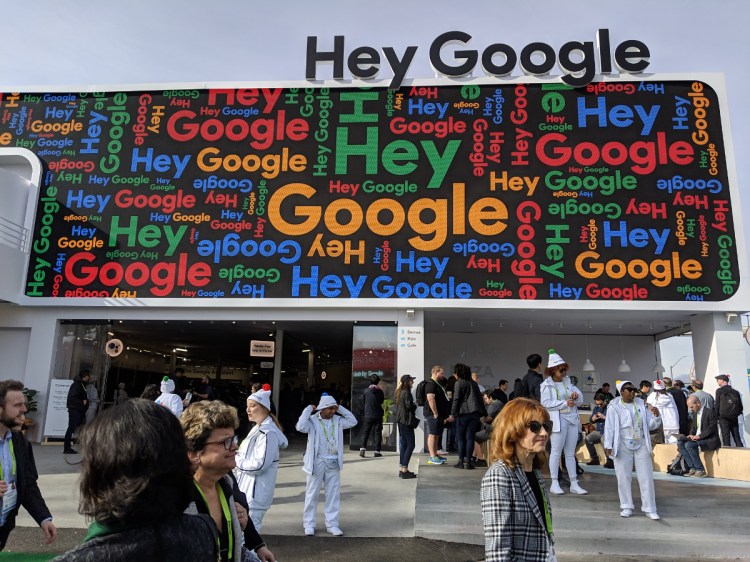Watch all the Transform 2020 sessions on-demand here.
Google Assistant today announced the introduction of real-time translations with Google Home speakers and third-party smart displays like those from JBL, Sony, and Lenovo. Interpretations will initially be available in 27 languages. Plans are to later bring real-time interpretations to mobile devices, but no date has been set, a company spokesperson told VentureBeat.
Real-time interpretation with Google Assistant is the latest conversational AI milestone from Google, following the release of Duplex and Call Screen for Pixel phones in late 2018. But just like the first response to Duplex, you should taper your expectations.
Initial demos by VentureBeat found Interpreter Mode to be quick in its response, but each exchange could last no more than 15 seconds, a limitation that makes Interpreter Mode helpful but not yet capable of handling the longer exchanges that often occur in a typical conversation. That length of time does seem helpful for interpretations in environments like hotel check-in or concierge desks.
June 5th: The AI Audit in NYC
Join us next week in NYC to engage with top executive leaders, delving into strategies for auditing AI models to ensure fairness, optimal performance, and ethical compliance across diverse organizations. Secure your attendance for this exclusive invite-only event.
Interpreter Mode for Google Assistant appears to build upon translation abilities introduced in fall 2017 for Pixel Buds that drew comparisons to the fictional Babel Fish.
While this feature attracted a fair deal of attention at the time, in practice there were some notable limitations. For example, instead of an assistant that listens to a whole piece of conversation, then spits out a response, in Pixel Buds these translations could not last more than 10 seconds.
Google Translate app today can also deliver some on-the-spot translations, but requires an internet connection, a hurdle that can throw travelers who are away from home without a cell connection.
The news was announced today at the Consumer Electronics Show in Las Vegas.
Also today:
- Google Assistant is coming to Google Maps, and Android smartphone users can do things like share their ETA with a friend or loved one, search for places to visit along their route, or add a new stop to their journey. Android Maps users will be also able to ask Google Assistant to read their messages and enable hands-free reply messages with WhatsApp, SMS, Facebook Messenger, and other popular chat apps.
- Starting with United Airlines flights in the U.S. in the coming days, Google Assistant can help you check in to a flight and get your boarding pass.
- Building upon an announcement made late last year, in the coming weeks Android smartphones with Google Assistant will be able to respond to commands even when the phone is locked, so you can check your schedule, ask a question, add a reminder, or set a timer hands-free without the need to pick up and unlock your phone.
- Assistant on lock screens was first made available for Pixel users and will be rolled out for other Android smartphones in the coming weeks, a company spokesperson told VentureBeat in an email.
- Samsung introduced Google Assistant for its televisions, and Google Assistant will get increase in entertainment options in the year ahead with integrations planned with Dish remotes and Hopper receivers.
- Google introduced Google Assistant Connect, a way for manufacturers to make simple integrations with Google Assistant for smart home control or to display information. With Connect, a manufacturer can enable simple smart home control or make an external button (like Amazon’s Echo Buttons can carry out Routines) that allows you to, for example, turn on a washing machine or see the weather on a smart mirror.

Above: Google Assistant Connect button
On Monday, ahead of the start of CES, Google announced its Assistant will soon be available on one billion devices. VentureBeat’s Kyle Wiggers reported that the voice of John Legend for Google Assistant, first showcased last year at I/O, has been postponed indefinitely.
While the new interpretation feature introduced today is only intended to act as a translator, it’s easy to imagine the same tech and intelligence someday helping to teach people a new language from scratch. Google Assistant can already provide answers about how to say phrases in more than 100 languages, such as “How do you say ‘hello’ in Mandarin Chinese?”
The introduction of a translator for Google Home comes shortly after Google Assistant reached a previously stated goal to speak 30 languages in 80 countries by the end of 2018. Google also introduced a bilingual assistant capable of switching its language understanding between two languages.
Understanding of languages will naturally be key to powerful speech recognition and the spread of voice-powered assistants. By comparison, Apple’s Siri speaks more than 20 languages, and Amazon’s Alexa speaks roughly half a dozen languages.


